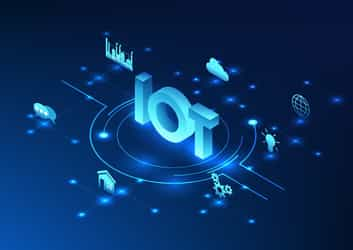
May 14, 2018
Blog Digital World 5 Key Trends in Radar Technology
The global radar manufacturing market is expected to reach $35.7 billion by 2022, according to a recently published BCC Research report “Radar Manufacturing: Global Markets to 2022.” Here are five key trends our analysts identified in the report that are shaping the industry over the next five years.
1. 3D Radar Systems
Many companies and military organizations globally are investing in 3D radar systems to increase the performance and efficiency of weather monitoring, military and surveillance systems. In a 3D radar system, measurements of all three space coordinates are made within a radar system. 3D radars have pencil beams which are rotated for scanning purposes. After each scanning rotation, the antenna elevation is shifted to the next sound. This process is further repeated on many angles to scan the entire volume of air around the radar within its maximum range. 3D radars are now replacing 2D radars mostly in the defense and meteorological industries.
2. Rising Use of Passive Radars
Passive radars are gaining traction in the market as they are less expensive and more efficient. These types of radars comprise of a class of radar systems that detect and track objects by processing reflections from non-cooperative sources of illumination, such as commercial and communication signals. They use existing electromagnetic signals from the atmosphere to support imaging and tracking capabilities compared to the regular/active radar that sends out electromagnetic signals to the target and receives reflected signals from the target. Passive radars use ambient radio signals for tracking and surveillance and are less expensive to operate.
3. Increasing Demand in Active Electronically Scanned Array (AESA)
Active Electronically Scanned Array (AESA) technology is gaining traction as it has advance tracking and detection capabilities. AESA has controlled array antenna in which the beam of radio waves can be electronically steered to point in different directions without moving the antenna. New AESA technologies have enabled an evolution to higher (millimeter wave) frequencies providing greater resolution with smaller phased-array antennas. These radars have much more efficient detection, targeting, tracking and self-protection capabilities compared to traditional mechanically scanned radar systems.
4. LIDAR Sensors in Automotive Radars
Automotive manufacturers are increasingly integrating LIDAR (Light detection and ranging) sensors in automotive radars to collect the data faster with high accuracy. LIDAR uses pulsed laser light to illuminate target and reflect the pulses with sensor and the differences in laser return times and wavelengths are used to make 3D representations of the target. LIDARs placed above vehicles provide 360 degree of obstacles vehicles should avoid. LIDARs in automotive vehicles generally use 905nm wavelength that can provide up to 200m range in restricted conditions. LIDARs are predominantly used in self-driving cars.
5. Integration of Radars and GPS
Radar manufacturers are increasingly integrating GPS with civil radars to improve tracking accuracy in security and navigation systems. The integration of radars and GPS in security systems offers automatic target following, friend or foe tracking and monitoring of areas in darkness. For instance, PureTech Systems integrated radar and GPS technologies in its automated outdoor surveillance system, PureActiv, that provides security professionals with accurate and reliable surveillance in indoor, outdoor and remote environments. In navigation systems, radar detection technology and GPS are being integrated to provide drivers with information related to speed limits, red light signals, 3D mapping of surroundings, lane assist and others.
Want more key insights on the global market for radar technology? Download the free report overview!

From smartphones to satellites, antennas play a vital role in enabling the seaml...

Introduction Artificial Intelligence (AI) and the Internet of Things (IoT) are r...

We are your trusted research partner, providing actionable insights and custom consulting across life sciences, advanced materials, and technology. Allow BCC Research to nurture your smartest business decisions today, tomorrow, and beyond.
Contact UsBCC Research provides objective, unbiased measurement and assessment of market opportunities with detailed market research reports. Our experienced industry analysts assess growth opportunities, market sizing, technologies, applications, supply chains and companies with the singular goal of helping you make informed business decisions, free of noise and hype.